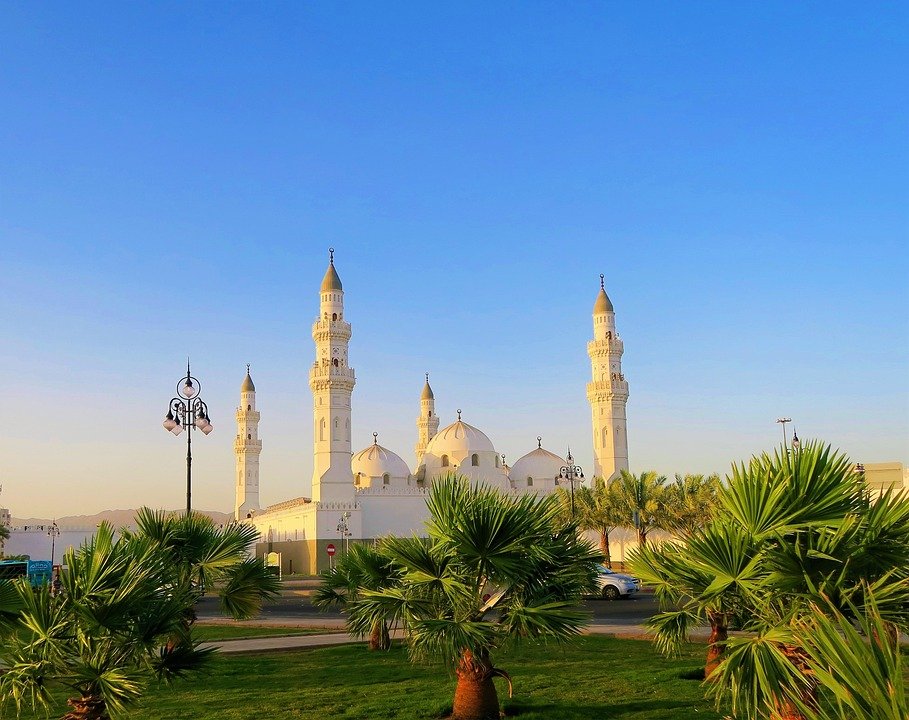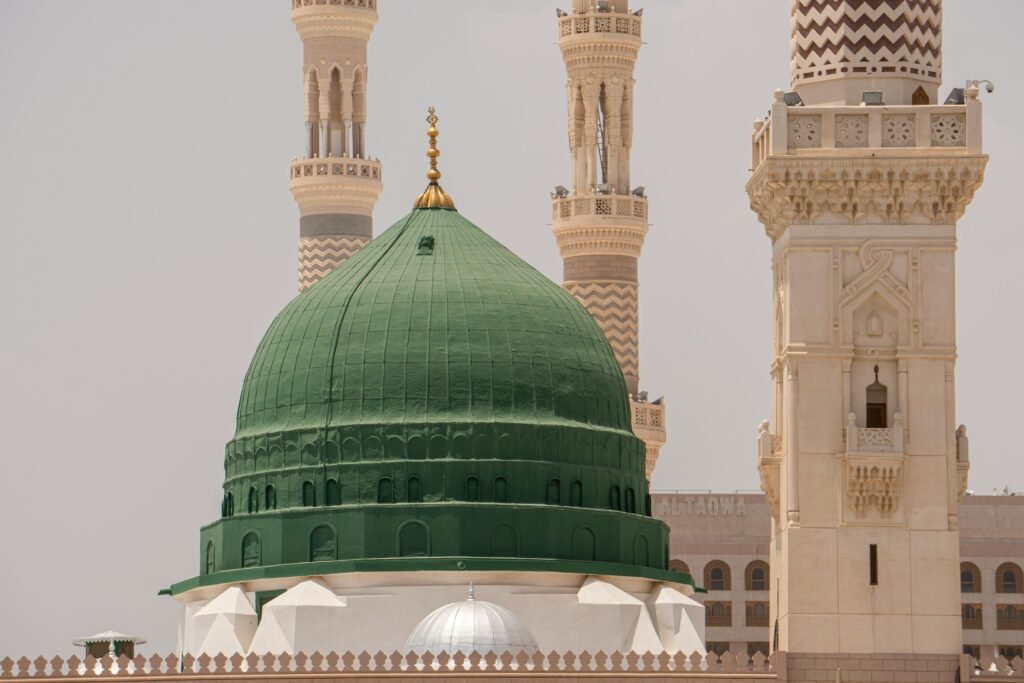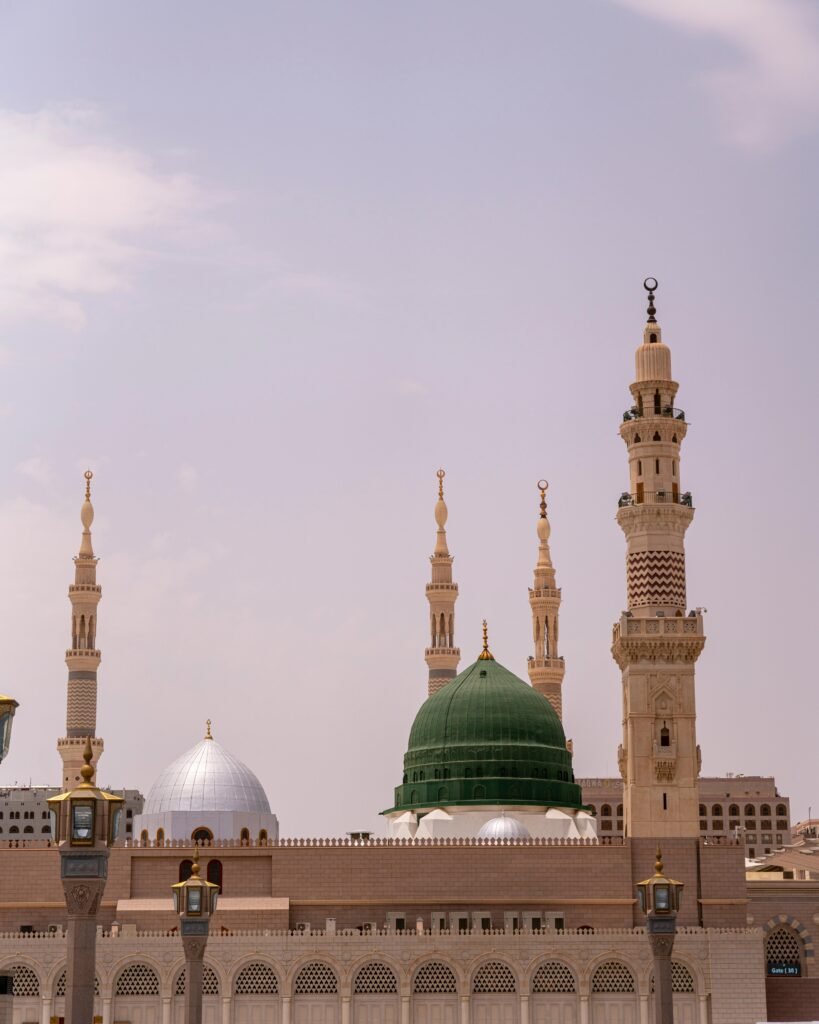Qibla is an Arabic word. The direction for offering prayers is called Qibla. The term “Qiblatayn” refers to two Kiblas. The event of changing the Qibla during the prayer of the Prophet (PBUH) occurred at “Masjid al-Qiblatayn.” Therefore, the mosque is named “Masjid al-Qiblatayn,” meaning the mosque of two Kiblas. As the direction of the Qibla changed from Bayt al-Maqdis to the Kaaba in this mosque, it is called the Qiblatayn Mosque (the mosque of two Kiblas).
Location of the Qiblatayn Mosque
It is located 4 kilometers away from Masjid al-Nabawi. Built on an elevated area in Harrah al-Wabra to the northwest of Madinah, the mosque is situated on Khalid bin Walid Road, near the Well of Rumah. This area was the residence of the Banu Salamah tribe. To its west lies the Valley of Aqeeq.
History of Qibla Change
According to Tabaqat Ibn Sa’d, the Prophet (PBUH) received the command to change the Qibla towards Masjid al-Haram while offering Dhuhr prayer with the congregation at this mosque. Allah said, “Turn your face towards Masjid al-Haram.” (Surah Al-Baqarah) The Prophet (PBUH) had long desired the change of Qibla towards the Kaaba. For 17 months, he offered prayers facing Bayt al-Maqdis. Then, in the middle of the month of Rajab, on a Monday, during the 17th month, he received the command to change the Qibla. This brought a distinct honor to the Muslims of Madinah. The Jews became displeased and started making various remarks about the change of Qibla. Allah Himself answered these questions, saying, “To Allah belong both the east and the west. So wherever you turn, there is the Face of Allah.” (Baqarah-115) The Jews questioned, “What caused the Muslims to change their Qibla?” (O Prophet) Say, “To Allah belong both the east and the west.” (Baqarah-142)
Yahya bin Muhammad al-Akhnas stated, “The Prophet (PBUH) went to the house of Umm Bashar from the Banu Salamah tribe. Umm Bashar prepared food for him. When the time for Dhuhr prayer arrived, he started leading the congregation. After offering two rak’ahs of the obligatory prayer, he received the command to turn towards the Kaaba and changed the direction of the Qibla.” Therefore, this mosque is called Masjid al-Kiblatain.
Renovation of the Qiblatayn Mosque
During the time of the Prophet (PBUH), the mosque was built with stones, bricks, and palm tree branches. Samhudi mentioned that the mosque was later made solid with a roof, though it is unknown who did so. In 893 AH (1491 CE), Shaheen Jamali renovated and added a roof to the mosque. Later, the Turkish Sultan Suleiman renovated it in 950 AH (1546 CE). King Abdul Aziz also renovated the mosque, adding minarets and stairs. In 1408 AH (1987 CE), King Fahd bin Abdul Aziz reconstructed and expanded the mosque. Currently, the mosque has two minarets. There are separate entrances for men and women. The women’s prayer area is on the second floor. The mosque has ablution areas, accommodation for the imam and muezzin, and a library. The mosque’s area is 1,190 square meters, and it can accommodate 2,000 worshipers at a time.



